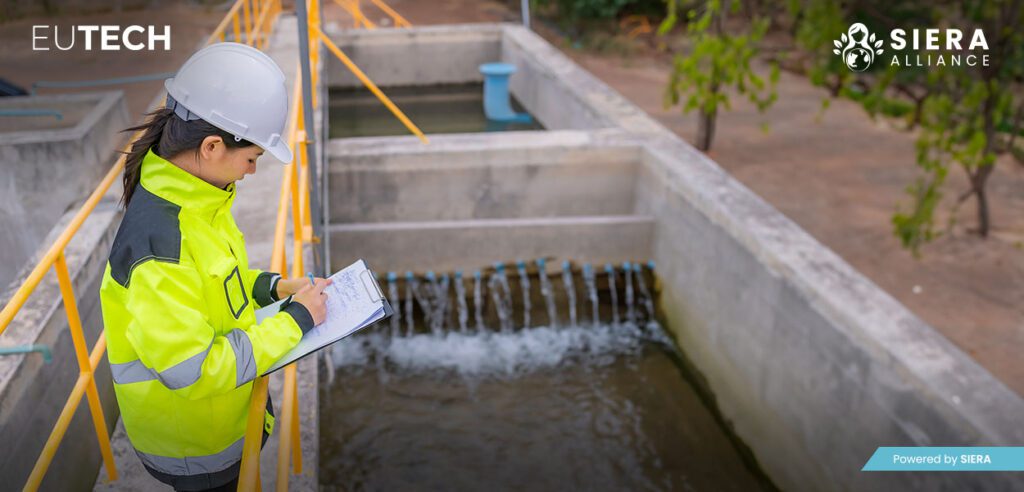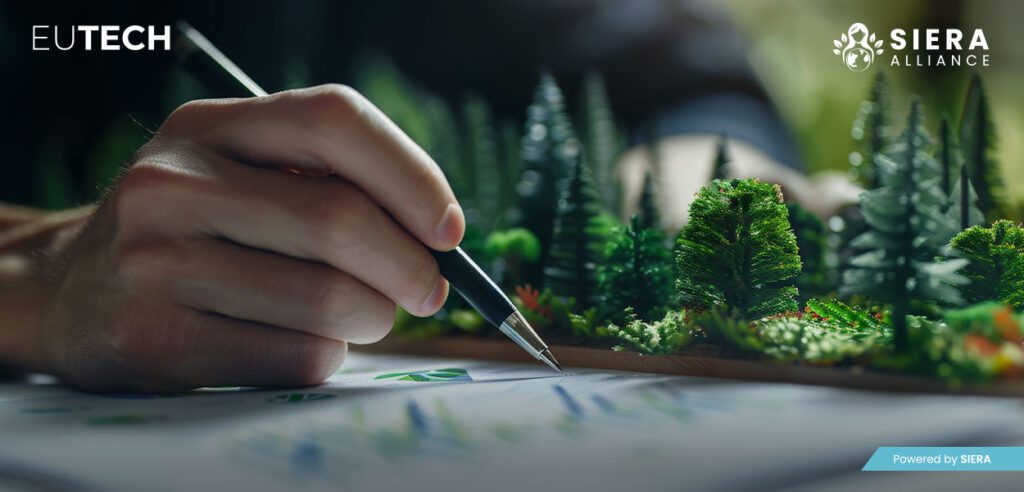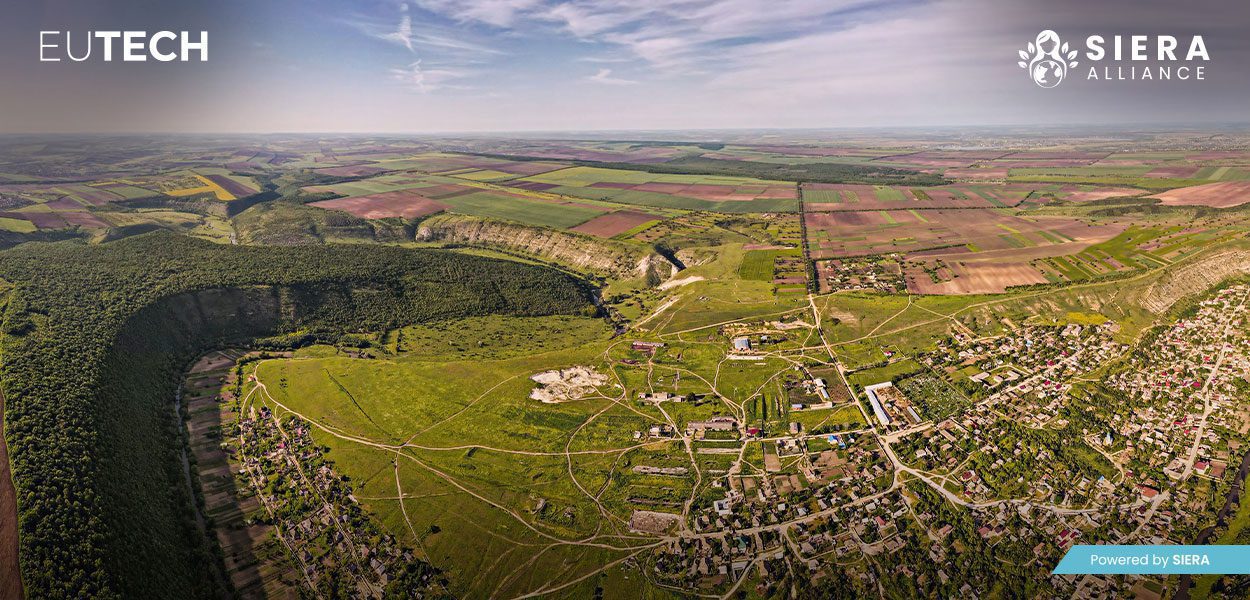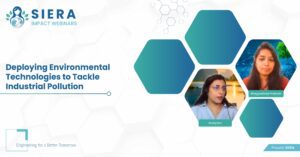Biodiversity: The Foundation of Sustainable Urban Development
Urban areas are expanding rapidly, with over 68% of the global population projected to live in cities by 2050. This rapid expansion threatens biodiversity, a cornerstone of resilient ecosystems and sustainable cities. To address this, municipalities must adopt strategies such as green roofs, urban agriculture, and rainwater harvesting systems to balance urban growth with ecosystem preservation.
On 4th October 2024, the EUTECH Authorities & Municipalities Council powered by the SIERA Alliance hosted a webinar titled “Integrating Biodiversity Conservation in Urban Planning.” Moderated by Dr. Igor Gladkov, the event featured insights from Sindhuja Talla (SIERA Expert) and Dr. Oliver Franz (VP European Regulation at E.ON SE). The session highlighted challenges and actionable solutions for integrating biodiversity into urban environments.
Key Challenges in Urban Biodiversity Conservation
The webinar highlighted the following critical challenges facing cities:
1. Urban Expansion and Habitat Loss
Cities cover just 3% of the Earth’s surface but generate 75% of carbon emissions. Rapid urban expansion has led to habitat fragmentation, putting over 1 million species at risk of extinction by 2050.
2. Loss of Urban Green Spaces
Infrastructure development has reduced urban green spaces in Europe by 30% over the past two decades. This contributes to the urban heat island effect, raising temperatures by up to 5°C and reducing habitat availability.
3. Degraded Ecosystems
Over 35% of global wetlands have been lost to urbanization, exacerbating water pollution and decreasing biodiversity. Restoring these ecosystems is vital for improving urban resilience.
4. Inadequate Biodiversity Management
Only 25% of cities globally have comprehensive biodiversity management plans. This lack of oversight results in 30% higher biodiversity loss in urban areas without structured conservation strategies.
5. Limited Integration of Technology
Although tools like GIS and AI can significantly enhance biodiversity monitoring, their adoption remains limited in urban planning frameworks.

Solutions and Strategies for Urban Biodiversity Conservation
The panelists shared innovative strategies for addressing these challenges:
1. Developing Green Corridors
Creating green corridors and wildlife bridges connects fragmented habitats, increasing ecological connectivity by 20-30%. For example, Freiburg, Germany, has developed an extensive network of green corridors that support biodiversity and enhance urban livability.
2. Implementing Green Roofs and Urban Agriculture
Green roofs and urban agriculture provide habitats for local wildlife while reducing urban heat. Incorporating rainwater harvesting systems into these designs further enhances their sustainability.
3. Restoring Urban Wetlands
Renaturalizing rivers and wetlands can increase species richness by 40-60%. Projects like the restoration of the River Thames in London demonstrate the ecological and flood protection benefits of such initiatives.
4. Integrating Smart Technologies
Using GIS, AI, and citizen science platforms improves biodiversity tracking by 50%. These technologies enable cities to identify critical habitats and monitor the effectiveness of conservation efforts.
5. Adopting Strategic Environmental Assessments
Incorporating Strategic Environmental Assessments (SEA) ensures urban projects align with biodiversity goals. Cities implementing SEAs report a 20% increase in ecosystem services, including improved air and water quality.
Transformation Opportunities in Urban Planning
Integrating biodiversity conservation into urban planning offers numerous benefits:
| Transformation Area | Benefits | Impact |
| Enhanced Urban Resilience | Green infrastructure mitigates flooding and reduces urban heat. | Cities with integrated green spaces experience 35-40% less stormwater runoff. |
| Increased Property Values | Biodiversity-friendly areas attract higher real estate investments. | Green developments see a 15-20% rise in property values. |
| Improved Public Health | Green spaces promote mental health and physical activity. | Residents near green spaces report a 25% reduction in stress levels. |
| Economic Benefits | Restored ecosystems boost ecotourism and reduce healthcare costs. | Cities investing in renaturation projects see a 10:1 return on investment. |
| Stronger Stakeholder Engagement | Collaboration with local communities fosters inclusive planning. | Cities with participatory planning report higher stakeholder satisfaction and biodiversity outcomes. |

Best Practices for Biodiversity Conservation in Urban Planning
- Incorporate Blue-Green Infrastructure: Combining blue-green infrastructure with urban planning ensures sustainable water management and biodiversity protection.
- Foster Multi-Stakeholder Collaboration: Urban planners should collaborate with ecologists, architects, and local communities to develop comprehensive biodiversity action plans.
- Adopt Circular Economy Models: Reuse materials and reduce waste during urban development projects to minimize environmental impact.
- Promote Rainwater Harvesting: Incorporating rainwater harvesting tanks and permeable pavements reduces stormwater runoff and improves water resource management.
Upcoming Events and Opportunities
Stay updated on future events hosted by the EUTECH Authorities & Municipalities Council powered by SIERA Alliance. For further insights into biodiversity conservation and sustainable urban development, explore the SIERA Alliance Event Calendar. Join us in building resilient and biodiverse urban spaces.
Conclusion: Building Resilient Cities for Future Generations
Integrating biodiversity conservation into urban planning is essential for creating sustainable, livable cities. By adopting green roofs, restoring ecosystems, and leveraging smart technologies, municipalities can enhance urban resilience while protecting biodiversity. Collaborating with organizations like SIERA Alliance and EUTECH enables municipalities to implement impactful solutions that benefit both the environment and urban communities.
To learn more about how SIERA Alliance can support your journey toward sustainable urban planning, visit our website. Join us in building a responsible future for cities.









